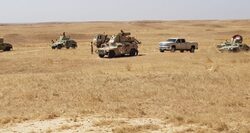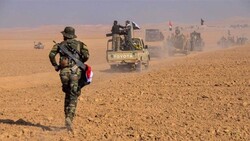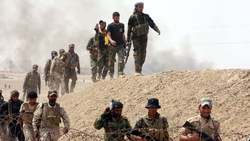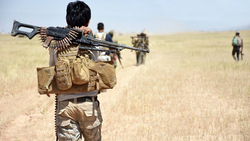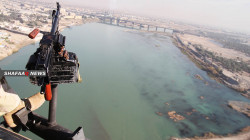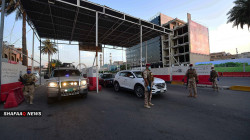US think tank says Baghdad should remove PMF from the Green Zone
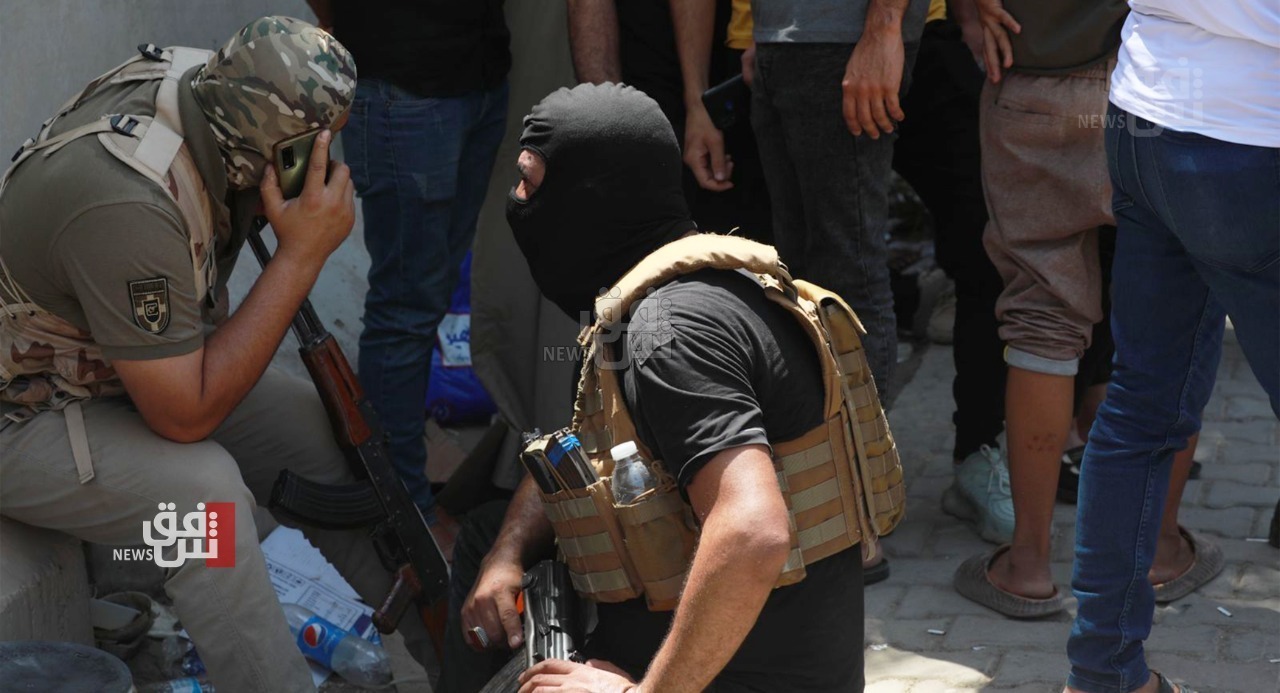
Shafaq News/ Michael Knights, a policy analyst for the Washington Institute, said that the United States and its partners should urge Baghdad to remove the militias, even those masquerading as government-run units, from Baghdad's International Zone (IZ), also known as the Green Zone, in the aftermath of the clashes that took place on October 29-30, 2022.
According to Knights, Iran-backed militias fired the first shots near the Republican Palace, spurring the followers of the powerful Shiite cleric Muqtada alSadr, "who were mostly unarmed at this point to retreat, mobilize more of their brethren, and resort to firing heavy weapon."
"How Did the Violence Unfold?"
On August 29, Sadrist supporters—who have forced their way into the IZ during a series of protests and mob actions in recent weeks—approached the Republican Palace for the first time. Located at the heart of the zone, the palace is mostly a symbolic site for the reception of foreign dignitaries, though some government functions are carried out in its many offices. Of critical importance, the palace grounds and nearby streets are also home to the offices and barracks of Iran-backed militias such as Kataib Hezbollah, Asaib Ahl al-Haq, and Harakat Hezbollah al-Nujaba—U.S.-designated terrorist groups who masquerade as government-paid units within Iraq’s Popular Mobilization Forces (PMF) despite remaining steadfastly outside government control. As Sadrists began flooding the area, these PMF units opened fire and drove them back to the northern entrances of the IZ.
Unfortunately, once Sadr’s forces remobilized and began firing back into the IZ, genuine members of the Iraqi security forces (ISF) were the most visible targets. In response, the ISF demonstrated outstanding restraint by not answering with deadly counter-fire of their own, operating under the direct control of Prime Minister Mustafa al-Kadhimi from the Joint Operations Command. Yet snipers from Iran-backed PMF units kept shooting at Sadrists, who in turn kept up their fire. By nightfall, complete chaos reigned, and the Sadrist mob was fully out of control and bombarding the IZ with machine gun fire and rocket-propelled grenades. As the dust cleared, around a dozen Sadrists were dead and about the same number of ISF, including half a dozen Iran-backed PMF members.
"Stabilizing Iraq Requires a Stable Government Center"
Throughout the showdown, every element of the ISF demonstrated great restraint except one: the PMF. Only the militias—both those affiliated with Sadr and those backed by Iran—operated outside the control of the prime minister and the Joint Operations Command. And only one element—Iran-backed PMF fighters—initiated the use of live fire against unarmed civilians inside the IZ. This underlines the need to remove all PMF units from the zone for the safety of not only the Iraqi government, but also the foreign diplomatic corps based there.
This issue has been a running sore for years. Estimates of the number of PMF militiamen inside the IZ vary wildly (from 500 to 10,000), and the figure likely fluctuates depending on various circumstances. Their presence has been reduced under Kadhimi, along with their forward-basing of heavy weapons inside the zone (e.g., 23-millimeter antiaircraft cannons) and their freedom to reinforce troops there at will—indeed, the past few days have shown that the broader ISF can prevent mass PMF reinforcement in the IZ during emergencies. Yet the fighting also shows that even a reduced number of PMF can cause major chaos and damage, including to Iraq’s international relations. Because of undisciplined PMF elements, an all-out battle broke out for one night in the heart of the IZ, plunging Baghdad back into civil war-like conditions.
This is not the first time the PMF have abused their position inside the IZ. Iran-backed terrorists masquerading as government fighters have instigated and provided targeting data for attacks against the U.S. and British embassies and Iraqi officials, including the prime minister. For example, they tried to overrun the U.S. embassy in December 2019, bringing Iraq to the brink of a destructive battle. Later, they surrounded Kadhimi’s IZ residence in June 2020 and struck it with explosive drones while he slept there in November 2021.
Sadr may have learned a lesson this week: that killing ISF soldiers is a terrible stain regardless of the context in which the shots are fired. Yet the Iran-backed terrorists who dominate the PMF have suffered no consequences so far for drawing first blood—they are still rooted at the heart of the government center, and no orders have been issued to remove them.
Going forward, the ISF and their commander-in-chief, Prime Minister Kadhimi, have the authority and moral imperative to require all militias and large bodyguard forces out of the IZ, and U.S. officials should urge him to do just that. On August 30, Kadhimi promised to investigate the opening use of live ammunition against protesters by “undisciplined groups”—politician-speak for the PMF—and called them out for failing to heed his orders. Taking the bigger step of removing all militias from the IZ would reduce the risk of new clashes, give the zone a more controllable security force, and begin to excise a longstanding cancer at the heart of government stability and diplomatic security. Whatever Kadhimi’s political future may be, the international community should remind him that he can still leave a lasting legacy in one crucial area: establishing a government center fully controlled by ISF elements loyal to the Iraqi government. Alternatively, if Baghdad fails to leverage this wake-up call and leaves the instigators of this week’s street battle in place, it would be yet another sign of a feeble government and absentee foreign partners.
(By Mark Knight for the Washington Institute)
